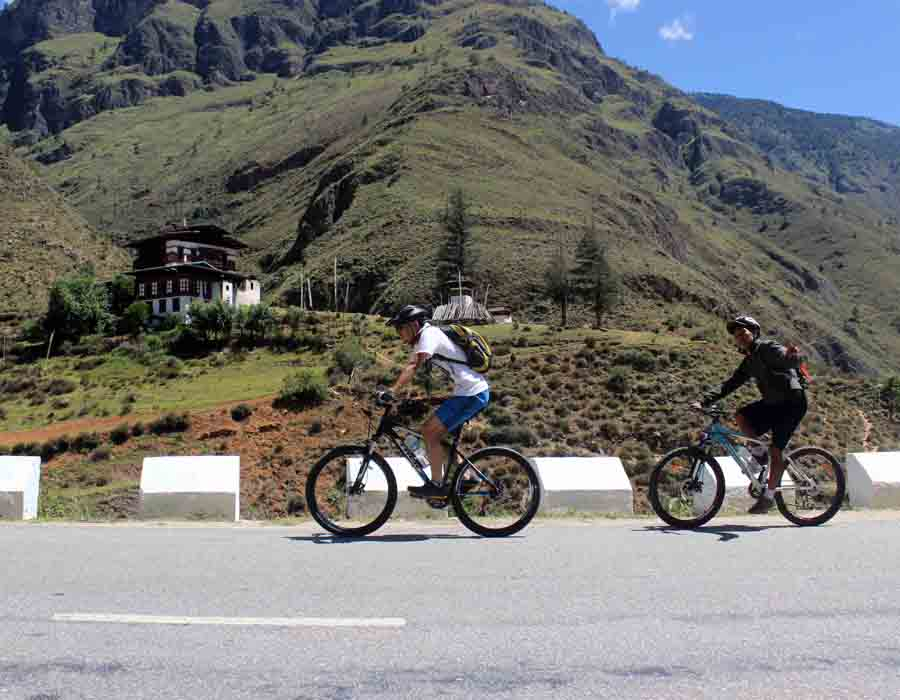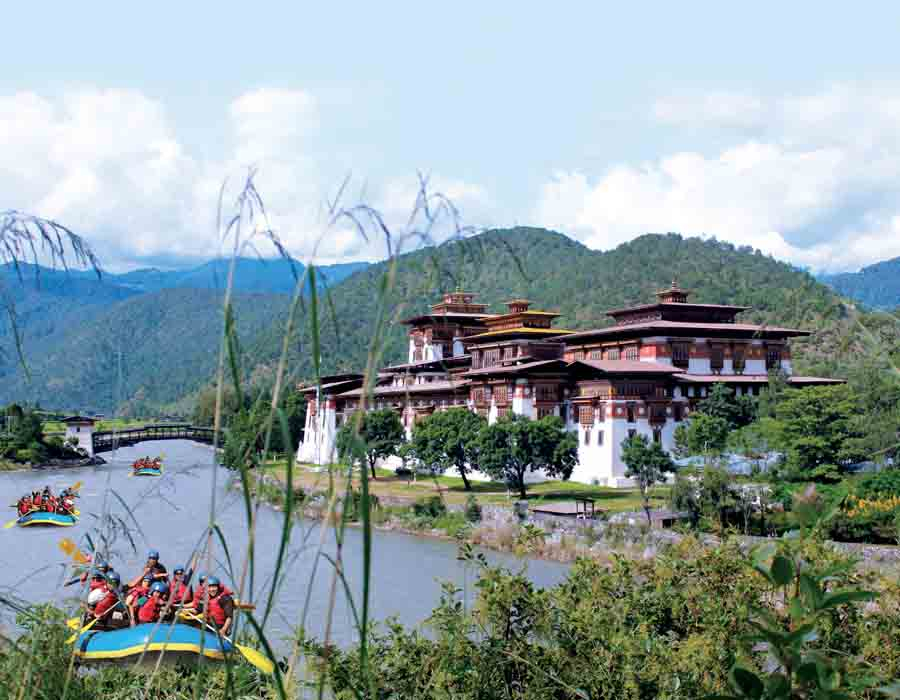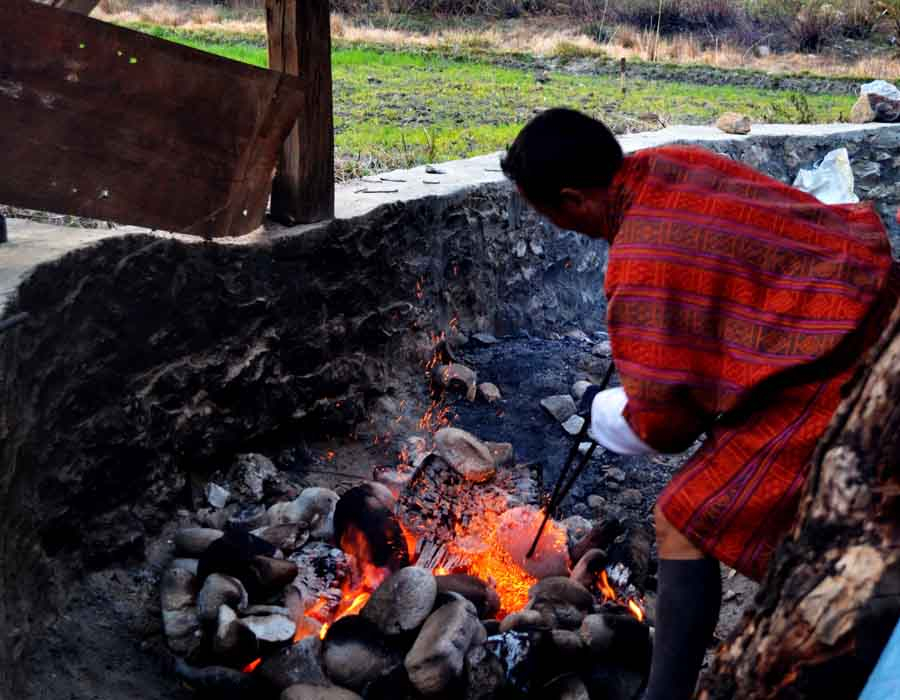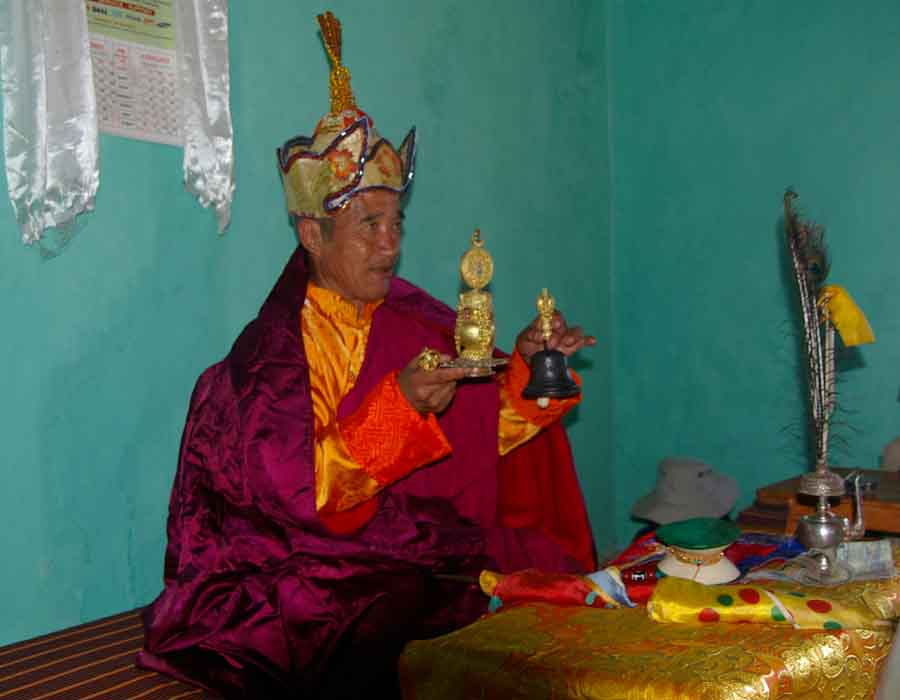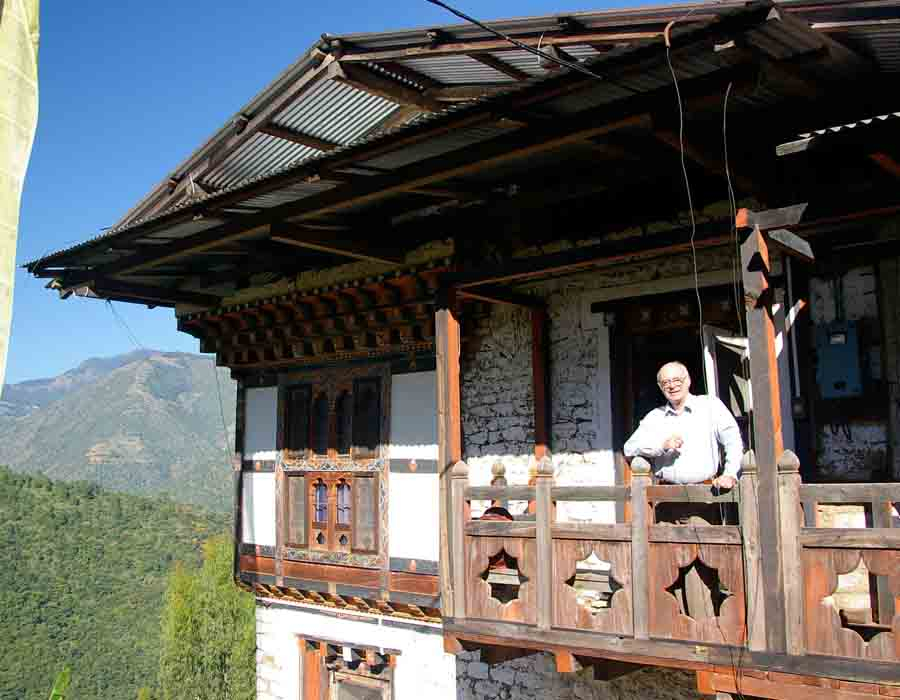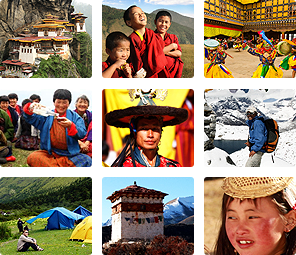- Quick Facts about Bhutan
- Best Time (Season) to Visit Bhutan
- Festivals in Bhutan
- Things to do in Bhutan
- Tourist Attractions in Bhutan
- Activities in Bhutan
- Bhutan Time
- Bhutanese Cuisine
- Bhutanese Language
- Communication Facilities in Bhutan
- Currency & Currencies Exchange
- What to Shop in bhutan?
- Local Tour Guides
- Photography
- Driving Distance between cities in Bhutan
- Supply of Electricity
- Accommodations & Hotels
- Clothing
- Medical Facilities in Bhutan
- Bhutan Trekking Check List
- Other Equipment
- Location – Southern Asia, between China and India Bhutan is the country of south-central Asia, located on the eastern ridges of the Himalayas. It is situated along the southern slopes of the great Himalayan range.it lies between China to the north and India to the south.
- Capital – Thimphu Thimphu is the capital of Bhutan. It is home to about 100,000 people and takes about an hour from the airport in Paro. It is situated in the western central part of Bhutan.
- National language – Dzongkha Dzongkha is the national language with both written and spoken. It was declared as the national language of Bhutan in 1971. Besides, Bhutan has at least 18 local dialects spoken by different communities across the country.
- Government – Constitutional Monarchy The form of government is a Democratic Constitutional Monarchy. The King is the head of state and executive power is vested in the cabinet, headed by Prime Minister. The first democratic elections were conducted in 2008.
- National Development philosophy – Gross National Happiness Gross National Happiness (GNH) is the development philosophy of Bhutan. It was propounded by His Majesty the Fourth King Jigme Singye Wangchuck in the early 1970s. The ultimate goal of GNH is to allow citizens to pursue happiness.
- Population – about 700,000 The latest Population and Housing Census showed about 700,000 population in Bhutan. Of the total, 62.2 percent live in rural areas and 37.8 percent live in urban areas. The sex ratio of the population is 110, which indicates that there are 110 males for every 100 females.
- Life expectancy – 70.2 years The overall life expectancy of Bhutan in 2017 is 70.2 years. Female life expectancy is higher with 71.7 years than that of males’ which is 68.8 years. In 2005, the life expectancy for females and male were 69.9 years and 65.7 years respectively.
- National bird – Raven The Raven is the national bird of Bhutan. It represents Jarog Dongchen – one of the most powerful deities of the country. The Royal Raven Crown or Druk Gyalpo represents reverence of Bhutan for Raven and the faith of Bhutanese in their protective deity.
- Religion – Buddhism Vajrayana Buddhism is the state religion and the spiritual heritage of Bhutan. It promotes the principles and values of peace, non-violence, compassion, and tolerance. Buddhists comprise two-thirds to three-quarters and Hinduism comprises one-quarter of its population.
- Agriculture population – 70 percent About 70 percent of the population is involved in agriculture in Bhutan. Agriculture is the mainstay of the people of Bhutan. The economy is based on agriculture and forestry in the country.
- Food – Rice staple diet Rice is the major cereal crop grown, by far, the most important and preferred food crop of the farmers. Rice production plays a major role in the food supply in Bhutan. It is cultivated largely for domestic consumption.
- Forest cover – 71 percent The National Forest Inventory report confirmed that Bhutan has 71 percent of the country under forest cover. Over 800-million trees are estimated to be found in Bhutan.
- Special occasion – The National Day of Bhutan on 17 December The National Day of Bhutan is widely celebrated across the country. His Majesty the King Ugyen Wangchuck ascended the golden throne as the first hereditary King of Bhutan on 17 December 1907.
- Currency – Ngultrum (Nu) The national currency is Ngultrum (Nu). It has the same monetary value as the Indian rupee. The currency notes come in denominations ranging from one to 1,000. They depict historically important fortresses in the country.
- National animal – Takin The Takin is the national animal of Bhutan. The animal is believed to be made up of an ox, antelope, a sheep, and a goat. The Takin has become a subject of great interest to the tourists.
- National flower – Blue PoppyThe national flower of Bhutan is the Himalayan blue poppy (Meconopsis gakyidiana). It was given a Dzongkha name ‘Gakyid’ which was inspired by the concept of Gross National Happiness. The flowers grow at altitudes of 3500-m to 4500-m on the rocky mountain terrains.
- National Butterfly – Ludlow’s Bhutan SwallowtailThe national butterfly of Bhutan is – Ludlow’s Bhutan Swallowtail. They are rare and found only in Bhutan. Swallowtails are found in the Bumdeling Wildlife Sanctuary in Trashiyangtse. It was approved by the government in 2012 as the National Butterfly of Bhutan.
- Transportation – Domestic Air and Land TransportFor the tourists, comfortable surface transport is available including SUV Car, Mini Van, and Toyota Coaster Bus. But tourists also use domestic air to visit the central and eastern parts of the country.
- Accommodation – 3-star hotel, 4-star hotel, 5-star hotel, and Luxury hotelA wide variety of accommodations are available. It ranges from luxurious 5-star hotels to cozy little hotels. There are also homestays in traditional Bhutanese homes in the remote pockets of the country.
- Climate – experiences all seasons Bhutan experiences all types of seasons. Weather depends upon the altitude. It is humid in southern plains, cool winters and hot summers in central valleys, severe winters and cool summers in the Himalayas. The monsoon rains are usually heavy.
- Major export – HydroelectricityA total of 1,615-MW of hydropower capacity has been installed in the country. The power exports to India are an important source of revenue. It contributes over 27 percent of government revenue and 14 percent of Bhutan's GDP.
- Voltage 220/240The mains supply in Bhutan is between 220 and 240 volts (50 or 60 Hz).
- Time zone – GMT +6Bhutan Standard Time is 6-hours ahead of Greenwich Mean Time (GMT+6). Bhutan does not utilize daylight saving time.
- Dialling code (+975)The international dialling code for Bhutan is +975.
- Total area – 38,144 sq. km Bhutan was reported at 38144 Square Kilometre in 2018, about the size of Switzerland. This is excluding areas under inland water bodies, national claims to continental shelf, and exclusive economic zones.
The best time to visit Bhutan are spring (March-May) and autumn (September - November). The weather is warm, dry and sunny. But it is recommended to carry warm clothes with the traveling gear regardless of the season.
Season 1 : Peak Season
- Season Spring
- Months March to May
- Festivals Gomkora, The Jacaranda blossoms, Paro Tshechu
- Trekking Jomolhari and Drukpath Trek
- Other Activities Rafting, kayaking, bird watching and fly fishing
Season 2 : Low Season
- Season Summer
- Months June to August
- Festivals Nimalung Tshechu and Kurjey Tshechu
- Trekking Jomolhari Trek and Drukpath Trek
- Other Activities Rafting, kayaking, bird watching and fly fishing
Season 3 : Peak Season
- Season Atumn
- Months September to November
- Festivals Black-Necked Crane, Thimphu Tshechu, Wangdi tshechu, Jambay Lhakhang Drup and Prakar Tshechu
- Trekking Jomolhari Trek and Drukpath Trek
- Other Activities Rafting, kayaking, bird watching and fly fishing
Season 4 : Low Season
- Season Winter
- Months December to February
- Festivals Punakha Dromche and Trongsa Tshechu
- Trekking Jomolhari Trek and Drukpath Trek
- Other Activities Rafting, kayaking, bird watching and fly fishing
Bhutan experiences all four seasons. Spring falls from early March and lasts until May. It is the time when the landscape transforms into a fresh riot of colours. The season sees the bloom of rhododendrons, wild azaleas, edelweiss and other wildflowers that carpet the meadows.
Besides, the pink and white blooms of pear and apple blossoms add a dainty touch to the valleys. The clear sky, pleasant outlook of the valley and moderate temperature make the season favourable for hiking and trekking across the country.
In the summer, daytime temperatures can rise to 30-degree Celsius, particularly in the lower valleys of Punakha and Wangduephodrang (western region). In the southern foothills, places experience hot and humid weather like the Indian plains.
The country also experiences heavy down powers from the Indian monsoons that may lead to landslides and roadblocks. This is a good time to be in the county with the landscape lush, green and mountains streams gurgling with life. The banks of the river would be swept by weeping willows. And the pine cones that glisten in the sun shows it is ready to plummet to the ground.
Autumn in Bhutan casts a bright golden glow on the vast landscape. It is one of the most crowded seasons of the year for the tourism sector in the country. In fall, rice fields ripen to a golden brown under crisp blue skies. This season sees the merry pink and white of cosmos flowers dot the countryside.
Winter in Bhutan gives a deep impression of a perfect trip. This is from December to February when the temperature dips to the lowest. The days are filled with sunshine while evenings can be turned into chilly. The winter landscape lays bare the majesty of the mountains and the sweeping valleys.
Many festivals are traditionally conducted throughout the year. Many festivals are held in certain areas only but some major festivals including Tshechu and Drubchen, and the National Day is held nationwide. These festivals are the most important events of the Bhutanese calendar. It has incorporated several secular elements primarily based Buddhist in character. If the visitors intend to attend the festivals, the tourists can plan their trip accordingly.
The tshechu is held in honor of the Guru Rinpochhe who introduced Buddhism to Bhutan in the 8th century. The classical dances in Bhutan are reflected in the religious mask pageants and ritual dances. Every mask dance performed at the tshechu has a special meaning or a story based on the religion. It is also believed that one’s accumulated non-virtue would be washed away and all aspirations and prayers would be fulfilled by attending festivals such as this. The dances invoke the deities to wipe out misfortunes, increase good luck and grant personal wishes.
Witnessing the dances and receiving blessings at the festival are believed to remove non-virtue and takes one closer to attaining nirvana or enlightenment. It is also one of the major contributors to the tourism industry which is the backbone of the country's economy, as it attracts thousands of tourists every year.
Here is the list of activities bhutan offers to everyone:
- Trekking Overnight Trekking in the pristine nature
- Mountain Biking mountain biking including a biking guide
- Cultural Traditional & Mask Dance Performances
- Meditation meditation with a Lama in a temple or in meditation house
- Spiritual Cleansing(Fumigation) To experience making The Traditional Bhutanese Prayer Flag Printing
- Archery Archery is a national game and the most popular game in the country.
- River Inner Tubing, Kayaking, Rafting (8 persons/raft)
- Fly Fishing fly fishing in river form Himalaya glacier
- Bird Watching Bird watching with Bird Specialist
- Cooking Class in the farm house learn Bhutanese cooking rice and ema datshi (Chilli and cheese)
- Cultural festivalBhutan is one of the ultimate travel experiences and a journey to the destination.
- Spiritual cleansing (Fumigation)It is culturally believed that every place has its local protective deity, and thus spirit and the fumigation occurs to keep the spirit happy.
- Golfing 9am to 5pm, closed on Monday, 9 hole golfing in capital city Thimphu
- Horse/Pony Riding horse or pony ridding in Paro valley
- Hot Stone Bath The Village Hot Stone Bath which is equivalent to Swiss sauna
- Khuru lessons Khuru the dart 45meters distance with 2 small wooden target
- Archery competition Traditional archery competition in ground with decorations
- Astrology Reading An astrology reading is believed to bring peace and harmony in one’s life.
- Beer Brewery Visit tasting beer(Red Panda) and visit brewery factory
- Butter lamp lighting 108 butter lamps in Dzong or Monastery to gain good merit
- Blessing Rimdo ceremony whole day auspicious ceremony to extend long life, bestows prosperity
- Blessing Thrisel Ceremony "cleansing of spirit, mind & soul with holy water"
- Religious ceremonyReligious festivals, ceremonies, and rituals in Bhutan are conducted across the country on the auspicious days in the lunar calendar.
- Blessing Tshewang for longevity
- Khabsay Making class in the farm house learn to make Bhutanese cookies and biscuit
- Donating a meal to the monks donate the meal to monks and nuns in temple or monastery
- Farmhouse Visit & Lunch Visit Farmhouse to see the traditional living and taste traditional cuisine
- BBQ lunch or dinner Private Riverside BBQ lunch or dinner (with archery & khuru lesson)
- BBQ lunch or dinner Fire pit with cultural programme
- Marriage Ceremony marriage ceremony in the temple or monastery altar
- Private Discussion Gross National Happiness, Textile and Weaving & discussions with High Lamas (Rimpoches) regarding Buddhism
- Private Lecture Protection of Nature, History of Bhutan, Gangtey Khenpo, The Head Lama
- Blessing ceremonyBlessing is highly recommended in Bhutan.
- Private lecture Bhutan provides private lectures for tourists
Note: Activities can confirm at the time of booking tour with Bhutan Bokar Travel Agency
Bhutan Standard Time is six hours ahead of GMT (Greenwich Mean Time). One time zone is followed by the whole country. Bhutan is 30-minutes ahead of India, 1-hour behind Thailand, and 15-minutes ahead of Nepal.
Bhutan is a rice consuming nation and the people depend on large quantities of the grain. Rice is not only the staple food but also constitutes the major economic activity and a key source of income for the rural population. People are generally consumed with a side dish of vegetables such as spinach, chili, potato and meat such as chicken, beef, pork, and fish, among others. There is more local cuisine that the visitors must try.
Besides, people also consume a good amount of dairy products such as cheese. It is usually added to vegetables to make a side dish, green salad of fresh chili, onion and tomato, and cucumber with chili powder.
Bhutan is also popularly known as a chili-eating nation. Chili is added to every meal. Ema-Datshi, which means chili and cheese is the most famous dish that tourists traveling to Bhutan should try. It is known to lead to secretions starting from the scalp, nostrils, and pores on the face.
Hotels and restaurants prepare a much milder version of the dish for first-time try-outs. Healthy foods are easily available across the country. It provides a welcoming environment to eat smart and enjoy the food.
Another common and popular food is Momo (steamed dumplings). The stuffing comes in beef, pork, and chicken with flour. The vegetarian Momo is stuffed with cheese mixed onion and cabbage. It is also served with a steaming bowl of bone marrow soup that is on the boil throughout the day.
Bhutan also has a unique salted butter tea called “Suja”. Some visitors have described it as a hot soup. At the same time, the local alcohol brew called “ara” helps to loosen and fire up the senses.
Besides, there is more local cuisine that the visitors must try. Hoentay originates from the Haa valley. It is made from the Bhutanese buckwheat and is steamed or fried with different stuffing of green leafy vegetables, cheese, and meat. The central regions also offer buckwheat delicacies such as “puta” (noodles) and “khu-lay” (pancakes), among others. These are served with the Bhutanese chili sauce eazy
Hotels and restaurants also serve a variety of Indian, Chinese and Continental dishes. In recent years, several restaurants have opened up in the capital. These restaurants serve Thai, Korean, Indian and traditional Bhutanese meals, among others.
As a landlocked country, seafood is generally not common. But tourist hotels and restaurants keep imported stocks that feature on their menu.
For treks and camping tours, seasoned and trained cooks usually come up with delicious meals using packaged and locally available food items.
Bhutan has 19 spoken languages and dialects spoken throughout the country. Dzongkha – the national language is the mother tongue of the Ngalops who inhabit the western region. Dzongkha means the language of the fort. It is the language that has a written script derived from Choeked – Classical Tibetan script.
Besides Dzongkha, there are three other dominant languages, Tsanglakha – spoken in the eastern region, Lhotsamkha – spoken in the southern region and Bumthangkha – spoken in the central region.
However, English is widely spoken in the country. Many people, particularly young stars, are more inclined to English. It is used as the medium of instruction in schools and for official communication. Most Bhutanese also speak a smattering of Hindustani. This is because of the exposure to Bollywood movies from India for the past half a century.
All major towns in Bhutan are equipped with basic communication facilities such as Internet cafes, telephone, fax, telegraph and postal services. Hotels also provide free internet and Wi-Fi facilities within the hotel premises. Cable television is also available in most urban towns.
Bhutan has two cellular service operators with network coverage in most parts of the country. The international roaming mobile coverage should check with their coverage provider if Bhutan is included. Otherwise, this should be identified before arrival. SIM card and recharge card (Voucher) is available in most towns.
For trekking tours, most operators are equipped with satellite phones that allow connectivity from any point in Bhutan.
The Bhutanese currency is the Ngultrum (Nu). It is pegged at parity with the Indian Rupee (INR), which the Bhutanese coins have maintained.
The US Dollar and the Indian Rupee is widely accepted in Bhutan. The exchange rates of the USD to the Ngultrum are published in local newspapers by the Central Bank of Bhutan.
Tourist hotels, restaurants, and souvenir shops accept visa and master credit cards for payments. Travellers’ cheques can be cashed at banks.
The other currencies accepted as a foreign exchange by five commercial banks in the country are the Bhutan National Bank Limited (BNB) – www.bnb.bt, the Bank of Bhutan Limited (BOBL) – www.bob.bt, Druk PNB Bank LTD. (DPNBL) – www.drukpnbbank.bt, T Bank LTD. – www.tbankltd.com and Bhutan Development Bank Limited – www.bdb.bt.
The banks also accept other currencies as foreign exchange, including US Dollar, Pound Sterling, Euro, Japanese Yen, Swiss Franc, Hong Kong Dollar, Canadian Dollar, Singapore Dollar, Danish Kroner, Swedish Kroner, and Norwegian Kroner.
In Bhutan, the visitors could shop for Himalayan antiques from Tibet, Nepal, and northern India. The Bhutanese crafts such as weaving products made from silk, cotton, yak hair, and wool, wood bowls, cups, masks and carvings, religious paintings called thangkas, jewellery and paper making – desho (coming from the word “de” referring to the Daphne plant) are available in the markets.
Bhutanese products worth a buy include Tsheringma herbal tea, honey, apple products, among others. Shops on the street will accept Ngultrum, the Indian Rupee, and the US Dollar.
There are ATM machines available for international transactions.
It is illegal to export Bhutanese antiques from Bhutan. If uncertain, certificates are available from the Department of Antiquities to determine if the item is an antique and its origins. An antique is defined as religious items that are 70-years old and more.
The cultural advisor and tour guides are seasoned professionals certified by the Tourism Council of Bhutan. The professionals are well versed in Bhutan’s history and culture, government rules, and regulations and trekking routes. The guides use English as a tool for communication. But there are also specialist language guides for French, Japanese, Chinese and German, among others.
Bhutan is one of a true world gem with something in store for all its visitors. It is known for many sacred pilgrim sites scattered across the country. The country makes a fascinating photographer spot with a unique location, architectural expressions, ancient customs, and traditions.
Everything about Bhutan inspires photography. Generally, photography is not restricted, but photographing people would be advisable to ask permission. In monasteries, temples, and Dzongs, photography inside the structures is not permitted.
All major urban centers and interior district towns are well connected with blacktopped roads that wind over mountain passes and deep valleys. The people living in remote pockets of the country are accessed to the road with the blacktopped farm roads. Steep ascents and descents with endless hairpin bends are characteristic of road travel in Bhutan. This makes travel much longer than it might be elsewhere.
The permissible driving speed in 50-km an hour is primarily because high speed driving on winding mountain roads is risky. Driving is one of the best ways to see the beauty of the country as it passes through traditional village settings, lush forests and High Mountain passes.
The electricity supply in Bhutan has become more stable in recent decades. This is a result of an increase in its hydropower generation. About 99.9 percent of the country is connected with electricity. Each rural household has been provided 100 units of free power per month. Some isolated rural pockets have been provided with home solar systems.
The voltage supply system used in Bhutan is 220/240 volts with two-pin and three-pin round-hole power outlets. Tourists are advised to bring flat to round pin converters. Such converters are available in urban centers. Most tourist hotels have multi-plug facilities. Trekking tours also see locations that have electric supply.
Hotel and lodge facilities have improved dramatically in recent years with the growth in the local travel industry. Tourism regulations require hotels and lodges catering to tourists to provide facilities of a minimum three-star (local) rating. This ensures a comfortable, clean and safe environment to stay for the night halt in the interior townships.
For a more authentic experience, tourists can go for ‘farmhouse and homestay’ where accommodation is provided within a traditional village house setting. Facilities are basic but clean up to the expectations. This also provides a welcoming and safe accommodation for visitors. It also provides friendship as well as a safe and stable living experience.
More luxurious accommodation can be arranged at the high-end establishments such as the Amankora, Uma, Taj Tashi, Zhiwaling and Le Meridian. Tourists will be required to pay for the high-end services beyond the daily tourist tariff.
For treks and camping tours, accommodation is provided in tents and horses are used for carrying trekking gears. An advance team sets up camp for the night halt. The seasoned cooks prepare nutritious and delicious meals using locally available organic food items.
Bhutan experiences all four seasons. Spring and autumn are pleasant with daytime temperatures around 20-degrees centigrade in temperate regions where most people live.
Summers is hot, stuffy and humid particularly in the lower valleys of Punakha and Wangduephodrang and in the southern foothills that its borders skirt the boundaries of the Indian plains.
Winter is cold, dry and dusty with the temperature dropping to zero and below at night. The valleys in the temperate zone of Thimphu, Paro, Punakha, Bumthang, and Haa will experience this weather.
It is advisable to bring both light and warm wear depending on the season. The temperature changes drastically because of the altitude variation. Bhutan’s altitude range is from 300-metres at the southern borders to more than 7,000-metres at its northern frontiers.
The visitors are advised to refrain from wearing skimpy and tight-fitting clothes to keep. This trend is for the sensitivities of a reserved traditional culture that is gently opening up to the modern world.
Dress modestly and respectfully while visiting monasteries, dzongs, and other religious institutions. Refrain from smoking while on the premises to these sacred sites. Besides, hats and caps should be removed before entering the premises and shoes at the door.
Pack clothes as per the seasons and include sunglasses with spare, pair of casual shoes, knife, hat, umbrella, insect repellent, hand cream, small sewing kit, and safety pins and torch or flashlight with spare batteries. It is also necessary to carry a mirror, scissors, sun cream, lip salve, soluble aspirin, antiseptic cream, and antihistamine cream. It is also important to carry anti-diarrhoea pills, a preparation for the relief of sunburn, and any regular medication or might need to take for a periodically.
The government of Bhutan does not check for vaccinations at the entry. Visitors are therefore advised to be up-to-date with the standard vaccinations when visiting Asia.
Travellers to Bhutan should visit their doctor or a travel medical clinic at least two months before their departure. If going for a trek, travellers should seek advice for vaccinations and medications to prevent and treat altitude sickness. This is also expected to treat other related infections such as diarrhoea and vomiting.
The Constitution of Bhutan charges the government with providing "free access to basic public health services in both modern and traditional medicines". Health in Bhutan is one of the government’s highest priorities for development and modernization. Hospitals and health centers across the country provide basic medical care. In case of severe cases, the patients will be evacuated to India or Thailand by air.
The BAFRA (Bhutan Agriculture and Food Regulatory Authority) enforces strict hygiene standards for food that is commercially sold in the market. Visitors still need to be cautious of what they consume for water-borne diseases.
All travellers must get comprehensive travel insurance to cover medical and evacuation expenses. The visitors must inform of any pre-existing medical condition.
The temperature drops below zero at night even during the ideal trekking seasons. The layering of clothing is the best way for trekkers to allow for these temperature fluctuations. It is recommended to include underwear, base layer clothing – a long-sleeved thermal vest and leggings. It is also advisable to take middle layer clothing – short and long-sleeved t-shirts or blouses and sleeping bags.
Ideally, the base and middle layers should be made of wool for their warmth, breathability, non-odour, quick-drying and low bulk and weight. Trekkers are advised to take top layer clothing – jumper or zip-through jacket +/- sleeveless zip-through vest, waterproof jacket, and trousers, hiking trousers, shorts or skirts, socks (wool or polypropylene to reduce risk of blisters), properly broken-in trekking boots and sun hat.
If trekking above 4000-m or outside the ideal trekking season, the trekkers must be prepared for sub-zero temperatures or snow. Therefore, it is recommended to include additional items such as alpine jacket, insulated trousers, woollen hat or balaclava, scarf, gloves, liner socks, and gaiters.
It is also recommended to take a backpack or soft duffel bag with some stuff bags and assorted sizes of zip-lock plastic bags. Some requirements include a down-filled sleeping bag suitable for high-altitude treks, day backpack, metal water bottle, head torch or small hand-held torch with extra batteries and bulb, general toiletries plus pre-moistened towelettes and hand sanitizer.
It is also recommended to include body chamois or fast-drying towel, SPF 30+ sunscreen for body and lips, insect repellent, first-aid kit, adequate supply of regular medications, plus some spares and sunglasses. Besides, laundry soap for longer treks, trekking pole or walking stick, binoculars, sewing kit (optional), reference books, pen and notebook, photography equipment with extra memory cards and a spare battery and extra duffel bag or suitcase to leave town clothes with tour operator while trekking is some important requirement.
Trekking in the Bhutan Himalaya is a unique and rewarding travel experience. If well prepared with gears suitable for Bhutan’s variable weather, there is no space to worry about comfort. The trekkers rather focus on the impressive Himalayan views, cultural and unique flora and fauna found in Bhutan.
SOUTHERN ASIA
